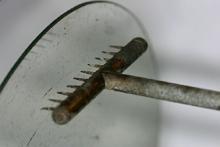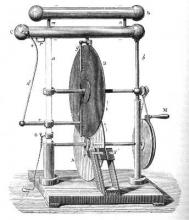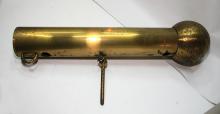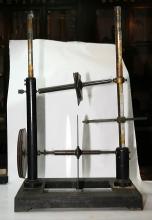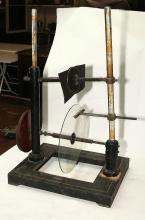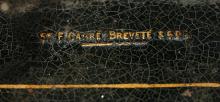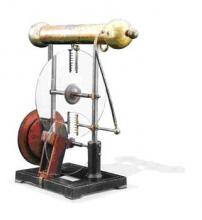Named after the French physician Carré, who designed and constructed it for the first time in 1868. This is a hybrid design. The bottom glass plate is positively electrified by friction of the rubber (missing) while winding the crank handle (missing). The top ebonite plate (only the central part is still there) winds faster. Negative charges are induced on the plate and are captured by the sharp terminals of the long conductor on the top of the device (which is now dismantled). There was a brass lever, connected inductively to the lower glass plate, that, helped by an ebonite handle, could approach the pipe on the top and create a spark up to 15cm high.
The ring on the underside of the large conductor serves for hanging a Layden capacitor. Listed as «F. CARRÉ BREVETE », i.e. «Patented by F. CARRÉ». An identical device is located at the Museum of Natural History of the 1st Gymnasium in Chios Island.
(http://physics.kenyon.edu/EarlyApparatus/Static_Electricity/Induction_Ma...)
(http://web.archive.org/web/20021209232213/http://www.thebakken.org/artif...)

